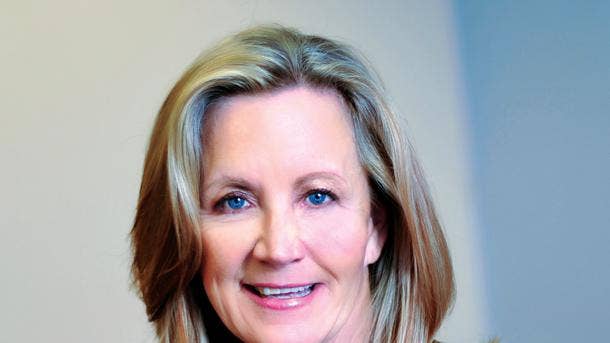The State Of IT Salaries And WFH Post-COVID-19: Hired Survey
While tech talent is concerned about job security and benefits during the COVID-19 coronavirus pandemic, they made it clear they want some kind of work from home arrangements now and once their employers get past the pandemic, according to a Hired.com survey.

Work From Home Trends During And After COVID-19
The COVID-19 pandemic has in the last half-year led businesses and their employees to significantly alter the nature of work. Instead of employees crowded in an office where than can interact with each other on a professional and social basis, those workers are increasingly working from home offices as the country looks to arrest the spread of the COVID-19 virus, which has this year already killed over 170,000 Americans.
The work-from-home trend means that nearly every tech person who can work remotely is doing so, with only those needed to keep a facility running regularly visiting their offices. That has led to new ways of looking at employment, to questioning whether tech employees should take advantage of work from home to move to more interesting locations, whether employers should be paying employees who work remotely from areas with lower costs of living lower salaries, and even whether work from home will become a permanent part of the IT landscape.
Also asking these questions was Hired.com, a San Francisco-based marketplace aimed at matching tech talent with businesses looking for tech employees. Hired‘s data science team analyzed over 425,000 interview requests and job offers in 11 markets in the technology industry over the last year, including information from over 10,000 participating companies and 98,000 job seekers, and collected survey responses from over 2,300 tech professionals worldwide to look at how the COVID-19 coronavirus pandemic is impacting salary requirements, attitudes to working from home, and more.
To bring more perspective, CRN also looked at how IT solution providers see the pandemic impacting both their and their clients‘ tech employees.
For a look at how the pandemic is affecting the IT industry, turn the page.

Split On Job Security
The COVID-19 coronavirus pandemic has tech personnel deeply divided in terms of job security both in their current positions and the prospects for finding a new job.
About 42 percent of respondents to the Hired survey said they are concerned they might be laid off in the next six months, while 58 percent said they are not concerned.
About 39 percent of respondents said they agreed or strongly agreed with the statement, “I want to leave my current job but am afraid to do so because I‘m worried about finding another job.” Another 34 percent either disagreed or strongly disagreed with that statement, while 27 percent neither agreed or disagreed.

Salary Expectations Mixed
About 49 percent of tech workers expect their salaries will increase by up to 20 percent in the next six months, with the majority expecting that raise to be under 5 percent, the Hired survey found. However, about 44 percent expect their pay to remain about the same over that same time period.
The vast majority of tech employees believe that they should be paid the same whether they are working from home or returning to the office. However, when it comes to salary for work from home workers, tech employees are almost evenly split when asked whether work from home salaries should vary based on the cost of living of where remote workers live, with about 40 percent supporting the variation and about 40 percent preferring to keep location out of the salary equation.

Negotiable On Salaries
About one-third of tech employees seem amenable to salary negotiations when it comes to work from home.
According to Hired, 32 percent of tech employees said they are willing to take a pay cut to work remotely. And 33 percent of tech employees would be willing to take a pay cut when starting a new job with a company that allowed them to work from home 100 percent of the time, the organization said.

Most Tech Employees Not Moving
Gartner, in a report published in April, said about 74 percent of chief financial officers surveyed by the analyst firm expect at least some of their employees who work from home because of the COVID-19 coronavirus pandemic to continue working from home even after the pandemic passes.
Continued work from home opportunities, whether by employer or employee choice, would give employees the opportunity to move to a new location, However, in the Hired survey, about 31 percent of respondents said they will likely never leave their current location, while 64 percent said they will stay in their current location for at least the next three years.
Of those who are considering a moving, 31 percent said they would do so to experience living in a new place, 24 percent for a lower cost of living, 21 percent to explore new job opportunities, 13 percent to be closer to family, and 10 percent to live in less densely-populated areas.

Mixed Signals On Moving For Lower Cost Of Living
When tech employees were asked by Hired specifically whether shifting to a permanent work from home status might make them more willing to move to an area with a lower cost of living, about 53 percent said they would be likely to do so.
However, Hired also asked those same employees where they would be most interested in living, and let them fill in the blank rather than choose from a prepared list of cities. The top choices, rather than actual low-cost areas, were today‘s top IT hubs including New York; Seattle; the San Francisco Bay area; Austin, Texas; Los Angeles; London; San Diego; Denver; Boston; and Portland, Ore.

Tech Employee Job-seeking Trigger
Hired found that over 60 percent of tech employees would either quit or immediately start looking for a new job if an expected raise was cancelled or their salary fell in the next six months.
Hired said that in a separate survey, it found that base salary was the most important factor in the decision to accept a job, with 31 percent of tech employees willing to accept a lower base salary in exchange for shares in a public company, while 21 percent would do so for equity in a private company. However, 48 percent would not substitute salary for either.
For businesses looking to cut salary expenses, Hired suggested offering alternatives, in order of tech employee preference, including upgrading health, dental, and vision benefits; unlimited personal time off; paid parental leave; free childcare services, and tuition reimbursement.

Work From Home In A Post-COVID World
After the COVID-19 coronavirus pandemic ends, tech employees want to continue to work from home, Hired found.
After COVID, nearly one-third of tech employees want to work remotely full time from any location, while 11 percent want to work remotely if they can do so in the same time zone as their company or their team. About half want to work remotely at least one day per week, while only 7 percent wanted to go back to working only from the office.
When asked specifically if they want to go back to the office after the pandemic, 35 percent of tech employees said they preferred to work from home permanently, 56 percent said they want to go to the office two to three times a week, and 9 percent want to be in the office full-time.
“All of this indicates that while most tech professionals are comfortable continuing with remote work to some degree, many of them still value having an office to return to on their own terms,” according to Hired.

Still Hiring: Kelly Ireland, CEO, CB Technologies
Orange, Calif.-based CB Technologies is looking for new salespeople and engineering talent, even as other solution providers are letting people go, Ireland told CRN.
“I think there is uncertainty,” she said. ”In our industry, if you‘re not really concentrating on solutions or managed services, but instead you are just being a VAR, you’re in trouble.”
Changes in how IT is done is happening at the same time businesses are hit by the pandemic, creating a double whammy, Ireland said. “The industry is changing, and then CXOVID exacerbates what‘s going on with VARs,” she said. ”That’s good for companies like ours because we’re offering what customers need with COVID.”
As a result, CB Technologies is seeing employees from other solution providers reaching out for new opportunities, Ireland said. “Some were doing OK jobs, but COVID is often an excuse for companies to cut their lowest-performing people,” she said.
The impact on the work from home trend impacts everyone differently, with some people saying they can‘t wait to get back to the office and others hoping to stay away, Ireland said.
“For us, things are mixed,” she said. ”Some things are hard to do well remotely. We have a lot of teaming, and if people are working from home, teams are not as smooth. Is this the best scenario? No. But things like collaboration are easier to facilitate if done face-to-face.”

Getting Harder To Find Good Jobs: Paul Clifford, President, Davenport Group
The rules of business are changing fast because of the COVID-19 coronavirus pandemic, Clifford told CRN. “At our level, we want to know what the rules are,” he said. ”But no one knows. Issues related to the economy now are all down to the virus. And there‘s only uncertainty.”
St. Paul-based Davenport has recently hired two people to help expand its business, and one as a replacement, even though revenue is down from last year and this is not the environment for expanding the business, Clifford said.
The pandemic will definitely change how employees will work in the future, Clifford said. “Post-pandemic, we‘ll be out seeing customers face-to-face again, but not traveling as much,” he said. ”We’ll go when we need to. New customers will definitely mean face-to-face meetings. For existing customers, we’ll be popping in via video, asking how things are and if we need to get together. We’ll still meet for beers, but for non-transactional stuff, why take three hours out of the day?”
As employees look to permanent work from home situations, Davenport will continue paying them the same regardless of where they live, although it‘s not sure all businesses will, Clifford said. He also sees more employees moving to be with family since they can work remotely. “These employees are creating their own compounds, and never have to leave,” he said.

Work From Home Is Here To Stay: Patrick Mulvee, partner, Sidepath
Irvine, Calif.-based Sidepath is no stranger to the work from home trend. The 48-person company has employees around California including Los Angeles, San Diego, and Big Bear, as well as people in Charlotte, N.C.; Dallas; Salt Lake City; Minneapolis; Phoenix; Buffalo, N.Y.; Austin, Texas; and Oklahoma City, Okla.
The work from home trend will be permanent for Sidepath, and likely for its clients as well, Mulvee said. This will mean more employees moving new locations based on something other than how close they are to the office, he said.
“The way everything is going now, if a company can save money, and if employers are more open to letting employees move, they will do it,” he said. ”I see Google is not bringing its people back to the office until 2021. I was blown away by that.”

Work-From-Home Salaries Will Vary: Chris Pyle, President, Champion Solutions Group
Work from home will continue to be the new normal during and after the COVID-19 coronavirus pandemic, and businesses will likely respond by paying salaries that vary with employees‘ locations, Pyle told CRN.
Champion‘s Boca Raton, Fla.-based headquarters space, like the spaces of many businesses, will shrink in size now that the pandemic has made it clear that employees can work as well from home as from a centralized office, he said. “When my lease comes up, no way am I going to sign for the same square footage,” he said.
Pyle noted that Facebook CEO Mark Zuckerberg in May said he expects 50 percent of his company‘s employees to be working from home five to 10 years from now, and said those who move to lower-cost locations should not expect to get the same salaries they have when living in Silicon Valley.
“That makes sense for business,” Pyle said. ”People who work in New York make more money than people who work in Missouri. The cost of living is different. The market will determine the value. The remote work pool allows you to expand your net. Before the pandemic, you typically looked for new people within 50 miles of the office. Now you can expand your net further and catch more fish.”

Work From Home To Reshape Salaries: Chris Case, president, Sequel Data Systems
IT personnel can be expected to move to lower-cost areas to work from home, although it is still unclear what percent will do so, Case told CRN. “Why pay super-expensive rents in California when you can move to Boise (Idaho),” he said. ”Boise‘s becoming a real hot spot for tech workers.”
The real question will be, will companies pay New York salaries to people who move to lower cost areas, Case said, noting that the question is more important for businesses based in large metropolitan areas rather that places like Austin, Texas where his company is located.
We wouldn‘t consider changing salaries based on location,“ he said. ”Texas has always been relatively inexpensive, and so we’ve not really had to play the wage adjustment game. We’ve interviewed people coming from the Northeast to Texas and they are OK with not making as much in Austin as they did before. For us, as long as people are doing their jobs and meeting their goals, that’s the most important thing.”